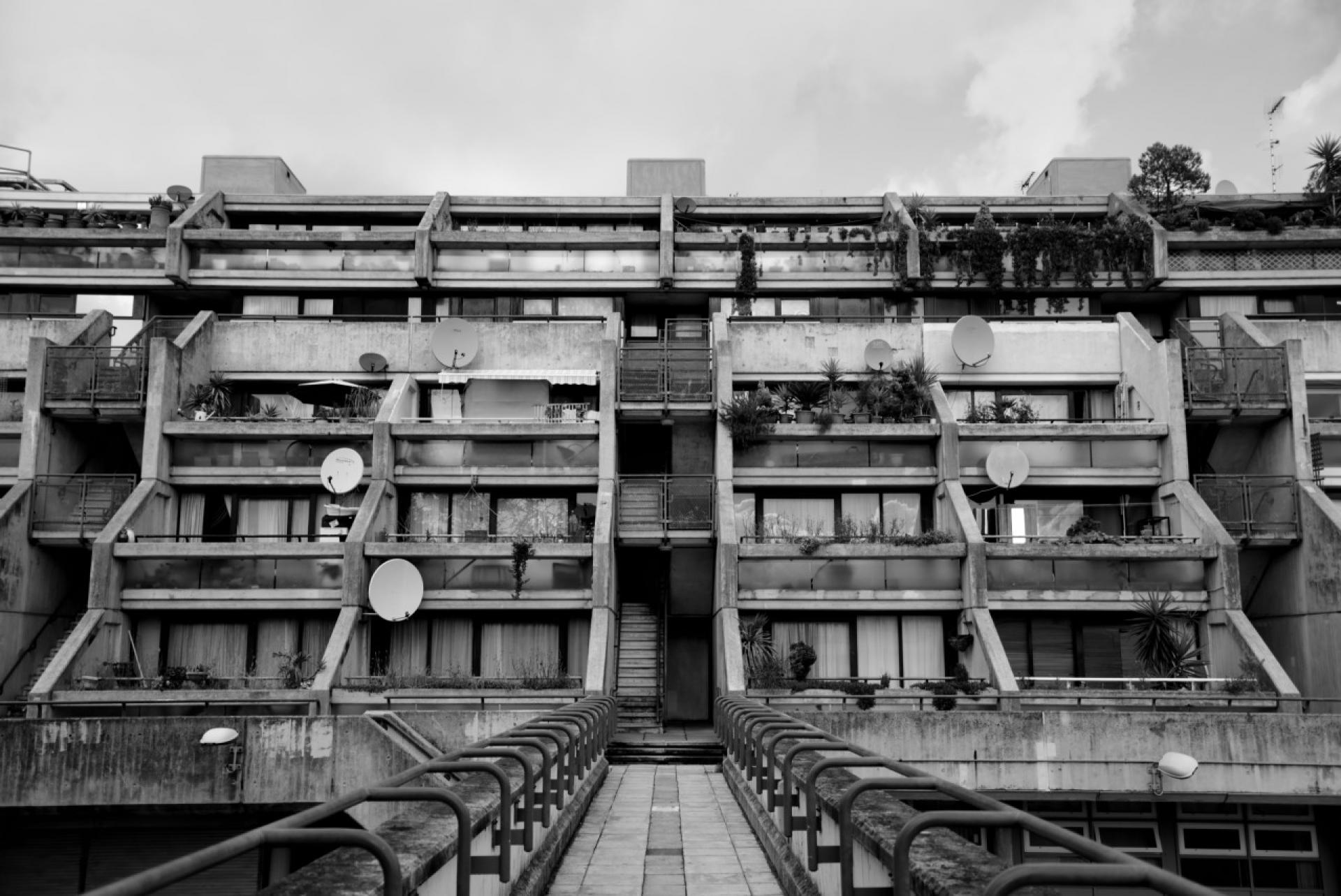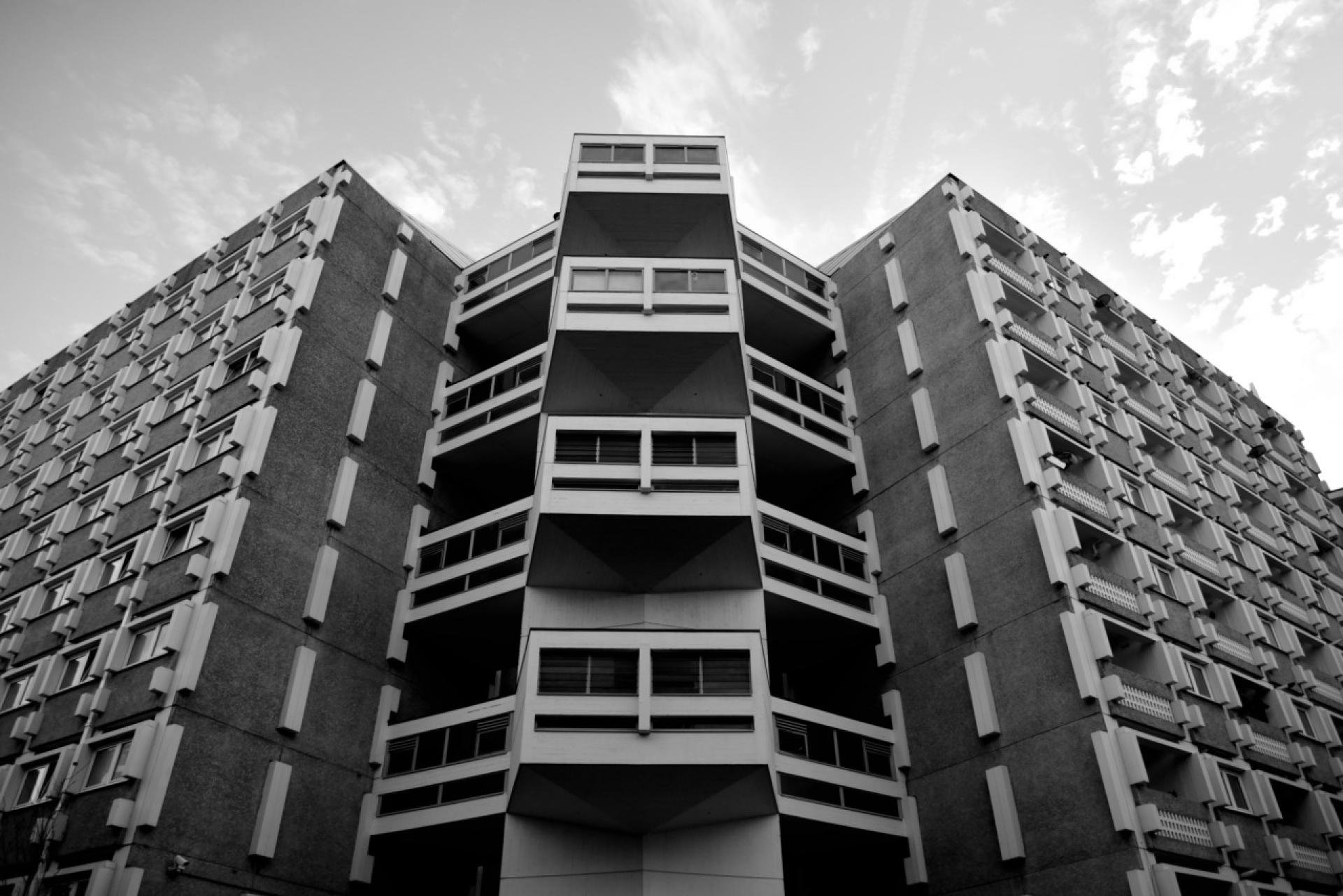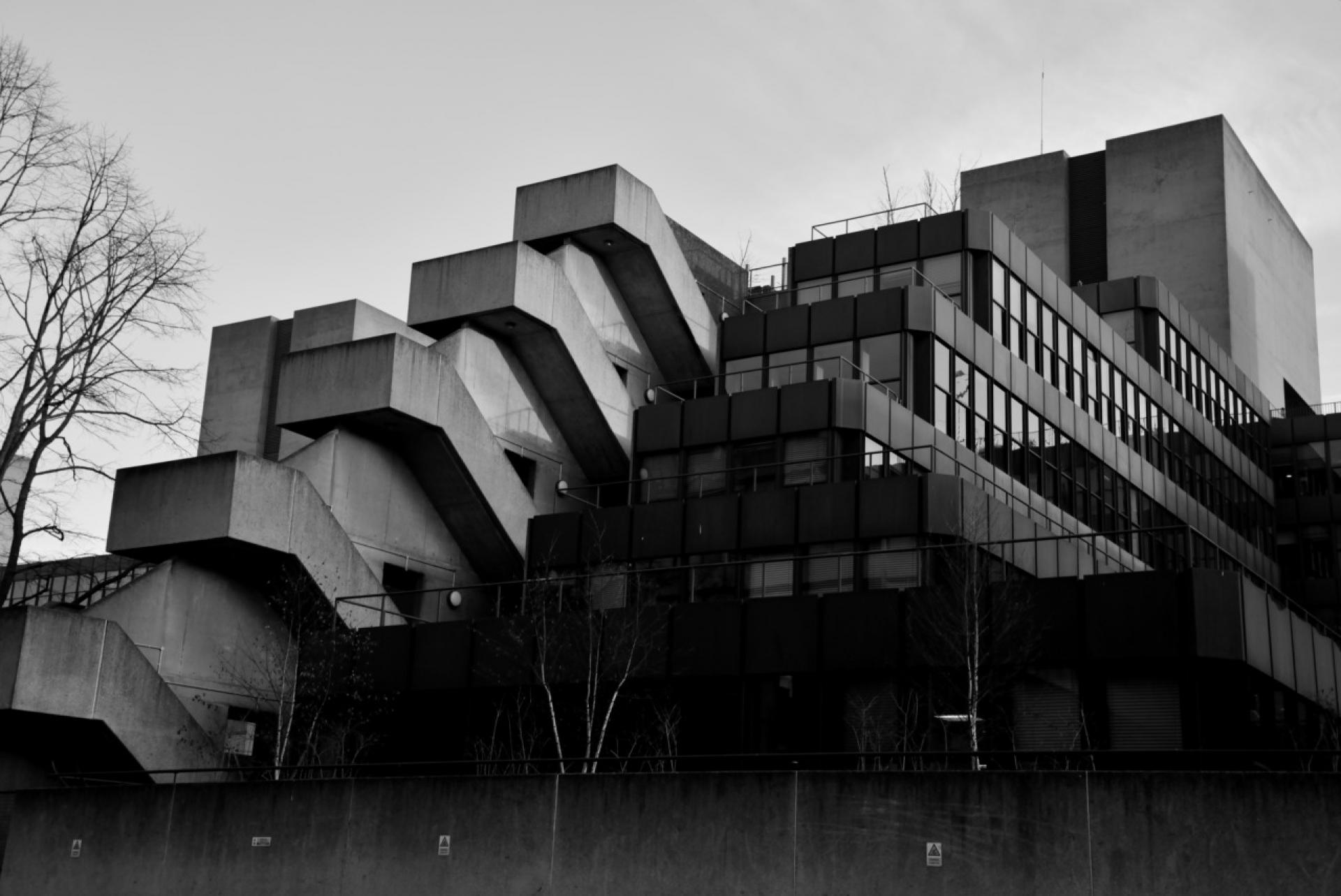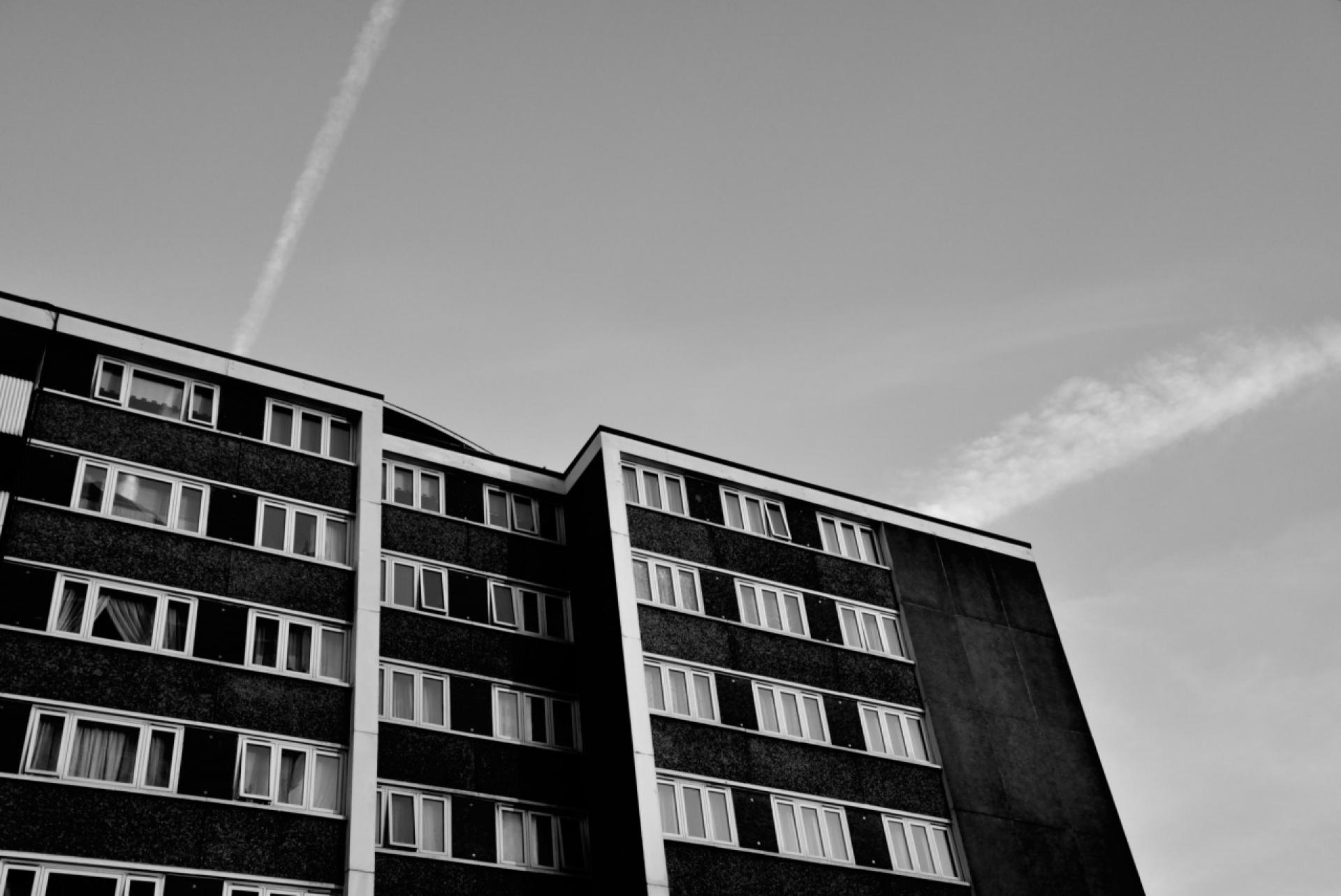Social Concrete
Horror of English brutalist housing described by Rory Carroll starts with “the nightmare would start moments after entering the lobby. Stench of urine, beer and stale sweat would seep from shadows, the lights would be smashed again and the corridor vandalized into gloom. Silence did not mean no one was there. Walk, and the broken bottles and syringes crunched underfoot.”

Barbican designed by Chamberlin, Powell & Bon (1963).
Carroll describes a place that closely resembles living in hell: a reality of British brutalism that is far from the geometric and beautiful photos of its architecture that are now so fashionable on Instagram. This is the reality of life in the Trellick Tower, known also as Horror Tower.

Trellick Tower by Ernő Goldfinger (1968).
Another example of a classic of English brutalism is Alexandra Road Estate in North London, which has been in recent years a popular location for several music videos such as the Foals’ Mountain At My Gates, TV series, or the recent blockbuster Kingsman: The Secret Service. However, beyond this footage, tenants still occupy the estate. This social housing where families sacrifice their terrace to place belongings that no longer fit inside, and live in an endless street that has almost no exits with the constant noise of the train tracks, turns into a crime-ridden neighborhood.

Alexandra Road Estate was designed by Naeve Brown (1972).
Although most of these brutalist buildings are located in the suburbs of big cities, there are exceptions: one is Weston Rise which is located in King’s Cross, just opposite the noisy Pentonville Road. This housing scheme is divided into 5 blocks linked together by towers, which mean that the complex is full of doors, escalators and elevators. The building is a labyrinth. The common areas were built with the intent of having play spaces for kids, green areas and quiet places for neighbors. However, the initial concept for this communal play space is far from the reality of a graveled garden, which is used by the tenants only to access the towers.

Weston Rise Estate by Howell, Killick (1967).
Those examples are not isolated, the most extreme one of recent years was Robin Hood Estate: a concrete monster located in East London. This mega-complex has been in constant controversy in the last years since the residents considered it an uninhabitable building, as English Heritage confirmed that it: “fails as a place for humans beings to live”. The great majority of people were ashamed to live there, as there was such a stigma attached. This led to the estate being in a process of continuous demolition.

Wellbeck Street Multi-Storey Car Park by Michael Blampied (1968).
The latest controversy arose when the iconic parking lot on Wellbeck Street, located near Oxford Street, was sold by the Shiva Hotels chain for around 100 million pounds. This historical monument of the English capital, will give way to a hotel complex with more than 200 rooms, a spa, restaurants, bars and a rooftop. If nothing changes, in 2021 the demolition of this popular building will begin, since the Historic Buildings and Monuments Commission for England declined the proposal to register it in the list of buildings of cultural interest. One of the reasons is that its demolition complies with the city’s plans to reduce the traffic of cars through the center of London.

Royal National Theatre designed by Denys Lasdun (1969).

Institute of Education by Denys Lasdun (1970)

Finsbury Estate by Emberton, Franck & Tardrew (1964).

Housden House by Brian Housden (1963).
Even if these examples may seem exaggerated and cannot speak for all Brutalist buildings in the English capital, we cannot forget that the vast majority of the buildings were made quickly and cheaply in the postwar period. Maybe that’s why it seems that these buildings have remained in the past while everything around them was advancing. This architectural style is part of English culture and we must seek solutions to preserve these council houses that evoke another era and another social reality.
_
Text and photos About Concrete by Ángel Biyanueba